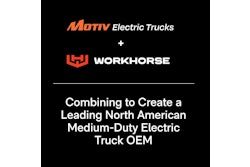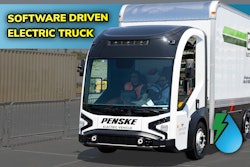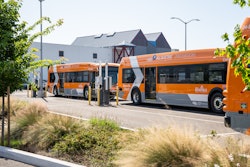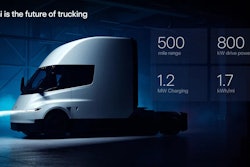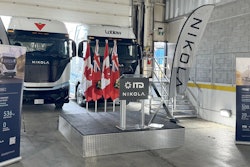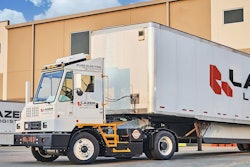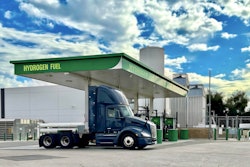
It's been a couple of months since any relevant Tesla Semi news has arrived, which is unusual considering Semi program director Dan Priestley previously went on record stating that series production will get underway in 2026 following Giga Nevada factory completion by the end of this year.
[Related: Tesla Semi program manager gives most detailed update on its BEV to date]
The Class 8 Semis themselves have been undergoing testing, in fairly limited numbers, by PepsiCo and DHL in the Modesto, California area and around 21 examples in Sacramento.
Fortunately, some fresh factory related news has now arrived, thanks to Semi supporter and drone operator @HinrichsZane on X, formerly known as Twitter.
What we're seeing in this drone footage is the delivery of a stamping press to the Nevada factory from Texas, where it reportedly stored for over a year. Interestingly, the huge machine was delivered not with pre-production Tesla Semis but rather by a pair of diesel-powered rigs and a trailer.
Clearly this is a good sign of Tesla's progress but nothing is ever for certain with Tesla until series production for any of its vehicles gets underway.
The company has a goal of producing 50,000 Semis annually. To date, an estimated 70 pre-production examples have been built for those aforementioned early corporate testers.
Fleet customers who placed a $20,000 deposit per vehicle remain in limbo, with no confirmed delivery dates. While rumors suggest the 300-mile Tesla Semi may start at $150,000 and the 500-mile version at $180,000, Tesla has not officially confirmed pricing. As with its passenger vehicles, prices may change with little or no notice.
Promising early results
Late last year, two of PepsiCo’s Tesla Semis participated in the North American Council for Freight Efficiency’s Run on Less program. The trucks operated on two types of routes: long-haul runs ranging from 250 to 520 miles with loads up to 82,000 pounds, and shorter daily routes under 75 miles, carrying diminishing loads that started nearly full and became lighter throughout the day.
The demos used megawatt charging, allowing the Semis to achieve up to 1,000 miles of range on a single charge. While Tesla reports having approximately 50,000 DC fast chargers worldwide, further expansion of this network will be crucial to the Semi’s success.
Priestley revealed that the tare weight of the standard 300-mile Tesla Semi is over 20,000 lbs, while the 500-mile version comes in at 23,000 lbs. He also noted that the fleet has logged over 3.5 million miles to date, with a freight efficiency exceeding that of SuperTruck 2—achieving 1.7 kWh per mile.



